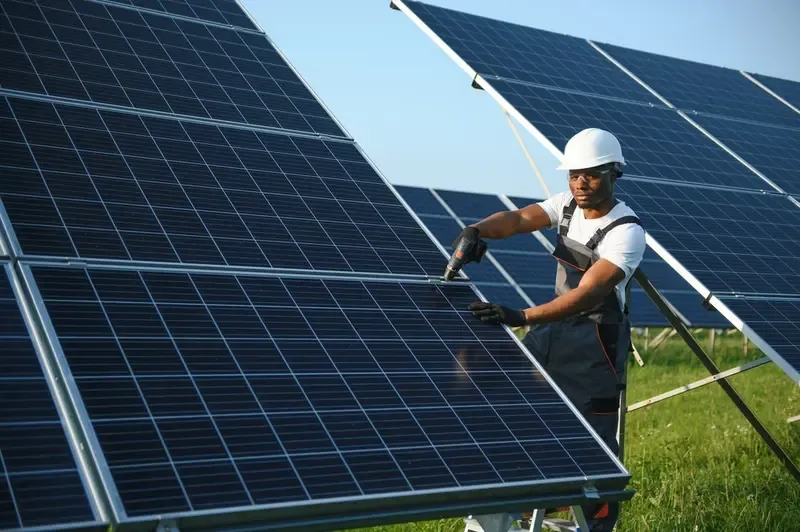How long do solar panels last?

Solar panel technology has emerged as one of the most reliable renewable energy options around the world. Whether you plan to install a solar panel at home or are comparing solar panel prices in Pakistan, one question always comes first: how long do solar panels last?
This is an important topic, as the lifespan of a solar panel will influence long-term savings, maintenance schedules, and overall energy planning. Most modern panels are designed to last several decades, but performance changes naturally over time. Understanding why this happens and how to manage it helps you get the most value from your solar investment.
Understanding How Long a Solar Panel Will Normally Last
Most high-quality solar panels can last for 25 to 30 years or more. In fact, this estimate is based on long-term field data and reliability studies. The United States National Renewable Energy Laboratory provides years of degradation research, including real field measurements
The meaning of ‘lifespan’ in the solar industry is not that the panel stops working after 25 to 30 years; rather, it means panels produce less electricity as they age. A solar panel loses a small percentage of efficiency each year, usually around 0.5 percent. Some new models even have a better performance rate.
To put this into perspective, here is a straightforward explanation of how performance usually varies over time:
Years in Use | Expected Output Level | Notes |
1 to 10 years | 90 to 98 percent | Very stable performance |
10 to 20 years | 85 to 92 percent | Minor annual degradation |
20 to 30 years | 75 to 88 percent | Most panels still functional |
Beyond 30 years | 60 to 80 percent | Output depends on environment and care |
This table shows that most panels continue providing practical electricity for far longer than their warranty period. Many installations from the 1990s still operate today.
What is behind such longevity in solar panels?
A solar panel has no moving parts. This is the key reason it lasts longer than many other energy technologies. The main components are:
- Tempered glass
- Aluminum frame
- Silicon cells
- Back sheet
- Junction box
Since there are no rotating or rubbing parts, there is very little wear and tear. Most long-term performance loss comes from gradual exposure to sunlight, heat cycles, and weather.
Factors That Influence Lifespan
Even though photovoltaic panels are robust, multiple factors can have an impact on their length of life at peak efficiency:
- Climate:Very high temperatures accelerate aging. Dry but extremely hot locations often experience faster yearly degradation.
- Humidity and salt exposure:This may lead to faster corrosion in coastal regions if the panel is not certified for marine environments.
- Installation quality:Well-mounted panels with proper ventilation tend to have a longer lifespan.
- Maintenance habits:occasional cleaning and checking for loose cabling; this keeps the energy output constant.
- Panel type:Monocrystalline panels usually degrade more slowly than some polycrystalline models.
These factors influence installations worldwide. For instance, a monocrystalline solar panel installed in a dusty region of Pakistan may need more cleaning and planning for airflow, unlike the same model installed in a cooler European climate.
Long Lasting Solar Panel Real World Examples
Sharing real-life cases would help to explain what long-term durability really looks like in practice.
One such salient example is the Kyocera solar installation, Sakura, Japan, started in 1984. In 2019, it was reported that after 35 years of operation, the system was still generating electricity at approximately 80 percent of the original capacity. This is clear proof of how long a well-engineered and -constructed solar panel can last once installed and properly maintained.
Another example is a field study conducted by the National Renewable Energy Laboratory in 2020. Measurements across dozens of systems operating in multiple climates showed that modern panels degrade at an average of about 0.5 percent per year. These real-world numbers reinforce the idea that many systems will continue performing well beyond the typical 25-year warranty.
These examples show that practical lifespans often exceed expectations when the installation is done carefully and panel technology is of high quality.
How Solar Panel Warranties Reflect Lifespan
Solar panel manufacturers include two kinds of warranties:
- Performance warranty: Usually assures that after 25 years, the panel will still generate about 80 to 85 percent of its original output.
- Product warranty: Covers physical defects for approximately 10 to 15 years, depending on the brand.
Performance warranties indicate the confidence of the manufacturer in the panel’s durability, so they are more important in long-term energy planning.
For buyers who are comparing a solar panel in Pakistan or other regions, the warranty can be a useful indicator of build quality. But warranty length itself is not defined as an actual lifetime. Many panels continue operating long after their warranty expires.
How to Extend the Life Expectancy of a Solar Panel
A solar panel is long-lasting by nature, but you can still extend its life with a few practical habits. And the best part is, these improvements will not require expensive tools and can be implemented anywhere.
Keep the Panel Clean
Dust, sand, bird droppings, and pollution can reduce energy production. A gentle cleaning schedule helps the panels maintain strong output. This is especially relevant in areas with wind-driven dust or long dry seasons. A solar panel installed in a desert region of Pakistan may drop in performance without occasional cleaning.
Good Airflow
Panels last longer when they stay cool. A well-designed mounting system has enough space beneath the panel for air to circulate. Keeping panels cool also reduces stress on the internal cells.
Inspect Cabling and Connections
Efficiency loss and occasional safety issues can be caused by loose wires or aging connectors. A simple inspection once or twice a year ensures everything stays secure.
Trim Nearby Trees
Shading not only reduces energy output but can also cause uneven heating on the panel surface. This thermal stress may accelerate aging. Keeping branches trimmed improves sunlight and reduces long-term stress.
Choose Reliable Equipment
Long-term durability starts with good design and material. Panels made of high-grade silicon with certified durability standards and strength usually last longer.
What happens to a solar panel during old age?
A solar panel does not just suddenly stop working when it has reached the end of its life. It actually works its way to being less efficient. After roughly 30 years, a panel might still produce 60 to 80 percent of its original output.
At this stage, owners often select one of the following three directions:
- Retain the panel as it is still useful in providing electricity.
- Replace it with a newer, more efficient model
- Reuse older panels for low power applications such as small pumps or garden lighting
Recycling is another developing area. Governments and research organizations are working to expand the recycling systems of solar panels. This helps reduce waste, recovering important materials from old panels.
Do Solar Panels Last Long Enough to Be Worth the Investment?
The short answer is simply yes. A solar panel provides decades of electricity with hardly any maintenance. Even after 25 years, most panels are still generating a meaningful amount of energy. The long life-span, low maintenance, and stable technology make solar one of the most reliable renewable energy investments.
For many homes, farms, and businesses, the long operating life often covers the original installation cost multiple times over. That’s also a key reason why solar adoption keeps growing globally, even in countries whose electricity prices are changing or where there are supply interruptions.
Is a solar panel’s lifespan changing with new technology?
Solar manufacturers continue with the development of new materials and better designs that improve performance. Modern panels have stronger back sheets, improved cell connections, and more efficient coatings-things that reduce yearly degradation.
Some of the most recent technologies include:
High efficiency monocrystalline cells with enhanced temperature resistance
Bifacial panels generating energy from reflected light
Better encapsulation materials to protect cells from moisture
Although these technologies do not guarantee significantly longer lifespan yet, they improve long-term stability and help maintain better performance levels.
Final Thoughts
Solar panels are long lasting, reliable, and incredibly resilient. Most high-quality panels can operate for 25 to 30 years with consistent output, while many continue to produce electricity well beyond that also. With proper installation and basic maintenance, the life of a solar panel can easily stretch into multiple decades, thus making it one of the most dependable renewable energy solutions available today.
If you are looking at how solar energy can support your own long-term plans, you can take a look at more topics related to solar technology and system planning.
